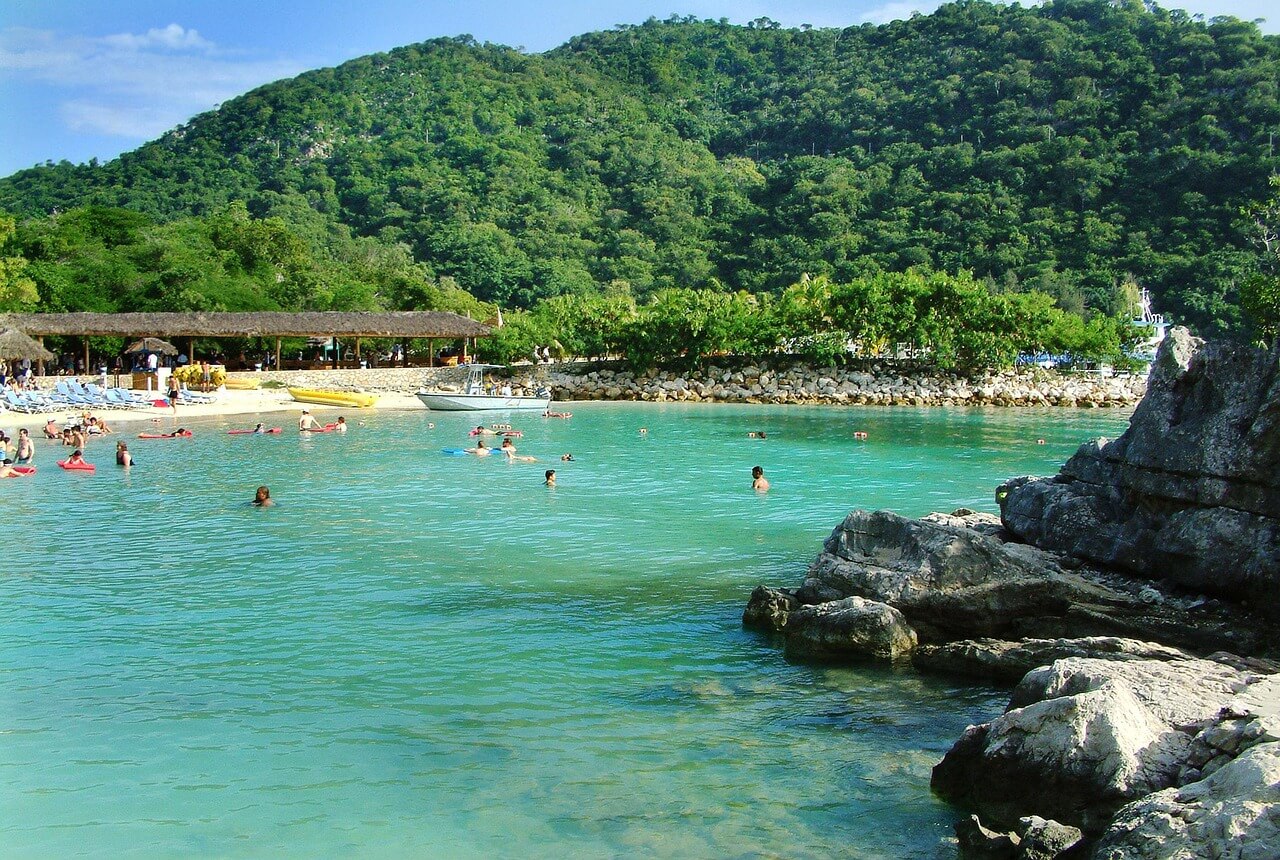When to visit Haiti during the year?
The climate in Haiti is tropical, characterized by distinct wet and dry seasons. The best time to visit is typically from mid-December to mid-April, during the dry season when the weather is pleasant. Summer months like June to August are hot and humid, with the possibility of tropical storms. Popular activities during winter include attending local festivals and enjoying the vibrant beach life in places like Jacmel and Cap-Haïtien. The spring offers unique experiences such as exploring the stunning Citadelle Laferrière while autumn can be a quieter time for cultural exploration.
How to get to Haiti?
Haiti is accessible via multiple modes of transport, with the primary entry point being by air. The country has a few main airports, with Toussaint Louverture International Airport in Port-au-Prince being the busiest. For those considering road travel, there are bus services connecting various cities, but international train services are limited. Here’s a breakdown of transport options:
- Main airport: Toussaint Louverture International Airport (PAP) in Port-au-Prince.
- Major international routes: Flights from North America (Miami), Europe (Paris), South America (Sao Paulo), Africa (Johannesburg), and Asia (New York).
- Low-cost airlines: Some budget airlines operate routes, especially from the USA.
- Flight times: Average flight time from New York to Port-au-Prince is about 4 hours.
- Main bus station: Port-au-Prince's terminal serves as a central hub.
- Key routes: Connects major cities like Cap-Haïtien and Les Cayes.
- No significant international rail traffic exists; domestic options are limited.
- Traveling by bus or car is preferable for regional movement.
- Main highways: Route Nationale 1 connects the entire southern coast.
- Distances: Port-au-Prince to Cap-Haïtien is approximately 155 km.
- Road conditions: Are often poor; caution is advised.
Tourist activities in Haiti
Haiti offers a rich tapestry of activities that cater to various interests. Adventure seekers can explore the stunning landscapes of the mountains, while history buffs will appreciate the cultural heritage sites scattered throughout the country. Here’s a glimpse of what you can enjoy:
- Cultural and Historical: Visit the Citadelle Laferrière, a UNESCO World Heritage site and a symbol of Haitian freedom. Explore the vibrant streets of Jacmel, famous for its art and crafts.
- Natural Wonders: Discover the turquoise waters of Labadee beach, or hike the lush trails of La Visite National Park for a glimpse of Haiti's diverse ecology.
- Adventure Activities: Take part in water sports like snorkeling and diving in the Caribbean Sea, or venture inland for hiking and zip-lining experiences.
- Nightlife and Festivals: Experience the pulsating rhythm of Haiti’s music scene, especially in Port-au-Prince, and join lively festivals such as Carnival, which showcases the country’s vibrant culture.
Accommodation in Haiti
Accommodation options in Haiti vary widely, catering to budgets and preferences. Visitors can choose from luxury hotels, budget guesthouses, and vacation rentals. In Port-au-Prince, upscale hotels like the Marriott offer modern amenities and stunning views. Mid-range options can be found in beach resorts, such as those in Labadee, often starting around $100 per night. For more affordable lodging, guesthouses and homestays provide a unique cultural experience for under $50 a night. Prices tend to surge during the tourist high season between December and April, so booking in advance is advisable for those seeking better rates.
Food in Haiti
Haitian cuisine is a vibrant fusion of flavors influenced by African, French, and Caribbean culinary traditions. Some of the most famous dishes include Griot (fried pork), Joumou soup (pumpkin soup), and Djon Djon (black mushroom rice). Street food is also plentiful, with options like patties and spicy fried plantains. Typical meal prices range from $5 at local eateries to about $20 at more upscale restaurants. For a true taste of Haiti, head to local markets bustling with flavor and energy, such as the Iron Market in Port-au-Prince.
Important numbers and information
- Emergency services: Police: 114, Ambulance: 122, Fire Brigade: 118
- Embassy contacts: U.S. Embassy in Port-au-Prince: 509-2229-8000
- Main airport: Toussaint Louverture International Airport, Port-au-Prince
- Currency: Haitian Gourde (HTG), US dollars widely accepted
- Visa requirements: Generally, a visa is not required for stays up to 90 days for U.S. citizens; check with your embassy for specifics.
What to see in Haiti?
Haiti is rich in history and culture, making it a wonderful destination for travelers seeking unique experiences. Key sites to explore include:
- Port-au-Prince: The bustling capital is known for its art scene and historical sites, including the National Palace and the Iron Market.
- Cap-Haïtien: Home to the beautiful Citadelle Laferrière and Highlands, this city offers breathtaking maritime views and cultural heritage.
- Jacmel: Known for its artisanal crafts, picturesque streets, and lovely beaches, it’s a hub for art and creativity.
- Labadee: A private resort area that features stunning beaches and water activities, perfect for relaxation.
History, geography and climate
Haiti is the first independent nation in Latin America and the Caribbean, born from a successful slave revolt against French rule in 1804. Its rich history is interwoven with struggles for freedom and self-governance. Geographically, Haiti occupies the western third of the island of Hispaniola, sharing its border with the Dominican Republic to the east. The country's landscape includes mountains, fertile plains, and beautiful coastlines along the Caribbean Sea. The climate is tropical, with average temperatures ranging from 21°C (70°F) in January to 33°C (91°F) in July, giving it a warm climate ideal for exploration.
Population and culture
Haiti is home to approximately 11 million people, predominantly of African descent, contributing to a rich cultural blend. The official languages are Haitian Creole and French, reflecting its colonial history. Religion plays a significant role in daily life, with a mix of Christian (mainly Roman Catholic) and Vodou practices. Cultural traditions are vibrant, with numerous festivals celebrating music, dance, and art, making the people of Haiti known for their warmth and hospitality. Major holidays include Independence Day on January 1st and the colorful Carnival season, showcasing a unique blend of cultural expression.








